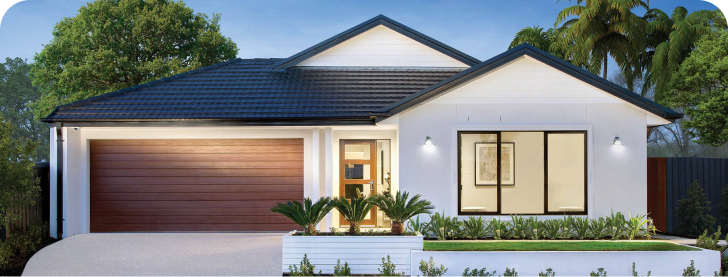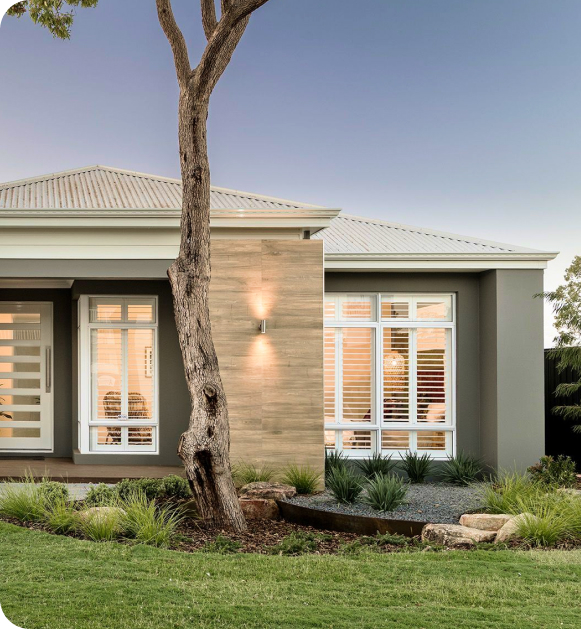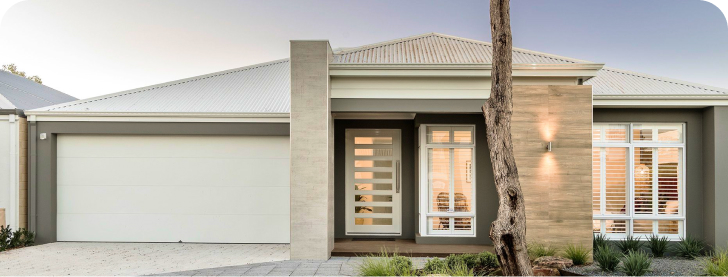
A property owner who rents out an accessory dwelling unit (ADU) must manage the existing structure properly. If you have one or more persons living in your attached or detached residential dwelling unit, establishing rules for sharing some amenities and facilities is a must. Otherwise, you might end up having tenants who are in constant conflict with each other or a destroyed housing unit.
While the most common amenities that are usually shared include eating, cooking, and sanitation facilities, new tiny homes often offer some additional resources that might attract new tenants. Accessory units and their proximity to the primary residence of a property owner allow you to always be on alert if any disagreement happens between residents.
However, proper management of the accessory dwelling unit and establishment of responsibilities for the shared amenities might save a lot of your time. Providing a stress-free environment for your tenants and family members should always be one of the priorities of additional dwelling unit (ADU) owners. In this article, we will talk about some tips and tricks on how to regulate shared housing among your renters.
First of all, when creating your personal ADU ordinance for the permanent provisions of shared amenities, consider all the facilities that you can or cannot provide for shared use. This might be done at the stages of planning, thus, before the building permit application, or you can add them to the existing infrastructure of the accessory dwelling unit.
Lately, the following shared amenities have been the most popular among landlords and tenants:
Whether you have a standard or a junior accessory dwelling unit, you must establish some rules for your tenants. Usually, this is done in advance, before you even get the potential residents. You might even mention some of the most important co-living regulations in your rental advertisement so that those who are not ready to comply with them will not even bother you.
Once your tenants have moved in, make sure to provide them with full information about using shared resources. With additional dwelling units (ADU), these common facilities might be located right in the ADU, on the same lot with other existing buildings, or inside the primary dwelling unit. Property owners often use junior accessory dwelling units attached to their main living space in order to create a convenient shared area, for instance, for doing laundry.
If you want your accessory dwelling unit to be rented out successfully, create a system that would work well enough without your constant supervision. Accessory dwelling units, ADUs, especially need an effective regulatory system in order for tenants to live in peace even within a limited-spaced living area.
One of the simplest yet working solutions is to establish a schedule for common amenities in your ADU. Although many tenants, especially those who get on well from the start, might come up with their own system, suggesting possible solutions will prevent you from any potential conflict.
For example, if your ADU does not have separate sanitation facilities or bathrooms, recommend time slots when one or another tenant cannot use them. This might be especially convenient to establish in the mornings, as the tenants might need to get ready for work.
Another important scheduling point relates to maintaining shared rooms. In attached and detached ADUs, kitchens or living rooms are often common for the whole unit. While scheduling a tenant's presence there is quite complicated and not necessary in most cases, having a timetable for maintenance and cleaning is pretty wise.
Whatever rules you come up with in your ADU housing, just make sure that they can actually be achieved. It is important to remember that imposing very strict, even absurd, rules might make your tenants uncomfortable and leave your unit without any income in the foreseeable future.
A reservation system for amenities in your ADU should not be something complicated. You can create shared documents and forms to fill out online if this would help you with structuring all the reservations. Or you can simply ask tenants to tell you and other residents in advance in your group chat. Whatever is the most comfortable for your single-family dwelling unit should be used.
Not all amenities need a reservation system for shared use. However, some of them do. For example, a tenant might want to reserve the additional parking space that you have created. If you have limited storage space, a reservation system can be created as well.
These kinds of regulations might be useful for everyday things as well. The most common example is laundry. Especially if laundry units are shared with the principal residence unit, clear reservations can prevent everyone from unwanted clashes and save everyone's time.
Successful co-living starts when all the tenants agree to their responsibilities. You must guide them from the very beginning on how to share sanitation facilities, cooking and dining zones, laundry machines, and any other floor area that is common.
Responsibilities for keeping the shared ADU amenities in proper condition can be assigned by the landlord or agreed upon by the tenants themselves. Here, the previously mentioned scheduling method is often used. What is more, you might implement some project management methods, like regular checkups and assignment of the areas each resident is responsible for.
Some tenants' responsibilities can be mentioned in your rental contract. However, including all of them is not always possible, which is why personal agreements between renters and homeowners are important as well.
Units that stand next to the existing structure of the single-family residence should have clear divisions in how shared amenities (especially those shared with owner-occupied main houses) are maintained. Also, some of the tenant's responsibilities might be mentioned in your local ADU ordinance for renting, so you might want to learn about those as well.
Homeowners who rent out their ADU have the right to take action towards tenants who do not follow their responsibilities connected to shared amenities. For breaking the rules established on your property, you cannot immediately impose any legal sanctions. However, personal notices might be done.
For any damaged shared construction, you can require tenants to pay a fee or compensate for the damage using their deposit. Some more moderate sanctions might include increasing the maintenance duties or taking over the responsibilities of other renters for some period. Moderate-income homeowners often implement the system of fees.
However, you might want to consult with law specialists on this one in order to avoid any unpleasant disputes.
From the very beginning, you should build a healthy communication style with the residents of your unit. Make sure to describe all of the requirements for living on your property and allow tenants to freely tell you about any arising problems. While being available for an in-person meeting might not always be possible, make sure that renters have all of your contacts to get in touch with you in case of any emergency or any other issue.
Some of the most common communication sources for rental housing include the following:
Establish a safe zone for your residents in order for them to be able to express any concerns, share problems connected to the use of your property, and resolve any conflicts.
Providing life necessities in the form of amenities is a responsibility of a tenant. You have to make sure that the water supply, heating, air conditioning, and other utility systems are properly functioning. Also, make sure that natural lighting and energy sources, like solar panels, for instance, are in good working condition.
All amenities, including the shared ones, should comply with the local safety code and should not impose any threat to tenants. If any troubles with the availability of housing facilities on your single-family property arise, you should immediately take action towards resolving them.
Your ADU housing should be comfortable for tenants to live in. Therefore, providing even small necessities for maintaining shared amenities is important. Stay updated on the availability of all the needed cleaning resources and provide additional ones when needed. For long-term housing, you can develop a system of regular purchase of such supplies, as it will ensure regular cleaning. You can suggest tenants buy supplies for the whole ADU in turns, or they might want to distribute their responsibilities by living areas, like kitchen, bathroom, or living room.
In your personal ADU ordinance, you can establish ways of controlling supplies and tracking expenditures on them. You can have a printed-out table in the ADU for your tenants to fill in, or you can use the online shared ones. As keeping up with all the information from tenants about appliances is important, do not forget to ask them directly whether there is anything their ADU is lacking.
As for the kitchen utensils, single-family property owners often provide them for short-term rentals, like vacation homes, for example. To track their availability, remember to count everything before and after tenants stay at your ADU. Make sure to keep them in clean condition and check for any damage in advance as well.
Managing supplies of smaller elements that are necessary for rental units can be difficult, as bigger issues often seem more important. However, the overall conditions of your ADU start with the maintenance of these property items. If you keep everything in control, you will save yourself from various problems and unnecessary conflicts with tenants.
Once you have picked the right tenants to live in your ADU, you usually show them around and tell them about the ADU and the overall property. During these tours, mention any requirements for the use of shared amenities. Providing examples of previous tenants can be useful to demonstrate how the system worked previously and whether it was successful or not.
In the beginning, your residents might need some time to get used to the new living place and its rules. During this period, you should be constantly available to provide any help, assistance, or advice. Show your renters that you are not some kind of evil landlord and that you are ready to accommodate them in your ADU comfortably.
House owners should also remind residents of their units about respectful co-living. Discuss any requirements for inviting guests or using amenities early in the morning or late at night. Also, it can be important to mention any specific neighborhood rules, if there are any.

No one is born perfect, and development in the sphere of property management is an ever-going process. Some mistakes cannot be avoided. However, you should always take the best out of any situation and learn from your past. Seeing the ways your ADU can be improved and constantly finding new directions for managing ADU amenities better is what you should focus on. Then, you will be able to successfully rent out your ADU for many years to come.
If any conflict concerning shared amenities in your units arises, think about what could have led to it and what you could do to prevent such things in the future. It might be that you need a new schedule system for your ADU amenities, or there is not enough control over tenants' responsibilities. Take actions toward change and see whether they give you better results in the future.
Management of shared amenities and any other resources in accessory units can be challenging. However, if you maintain a good system, constantly communicate with your tenants, and solve all the issues quickly, no problems should arise.
One possible drawback of accessory dwelling units could be the fact that they are limited in space. Although they are considered complete independent living facilities, still, there might not be as much room as is in a primary residence, for example. Smaller living space requires homeowners to come up with effective design solutions that can improve the functionality of manufactured homes.
According to the state ADU law, the process of receiving building permits is now much faster than it was before, allowing any homeowner to start working on the proposed ADU quicker. Also, the state law that regulates ADU construction now allows the possibility of these housing units being taller than 16 feet in some cases,
Accessory dwelling units stand on the same parcel as the existing primary residence, which can be either a single-family dwelling or a multifamily dwelling. These affordable housing units must be no taller than 16 feet unless anything else is allowed by the local government code. To receive a building permit, property owners should create ADUs that have at least 4 feet of setbacks from rear and side property lines. A general contractor can help you to deal with planning an ADU according to available zoning information, creating a functional design, and constructing the new ADU.











